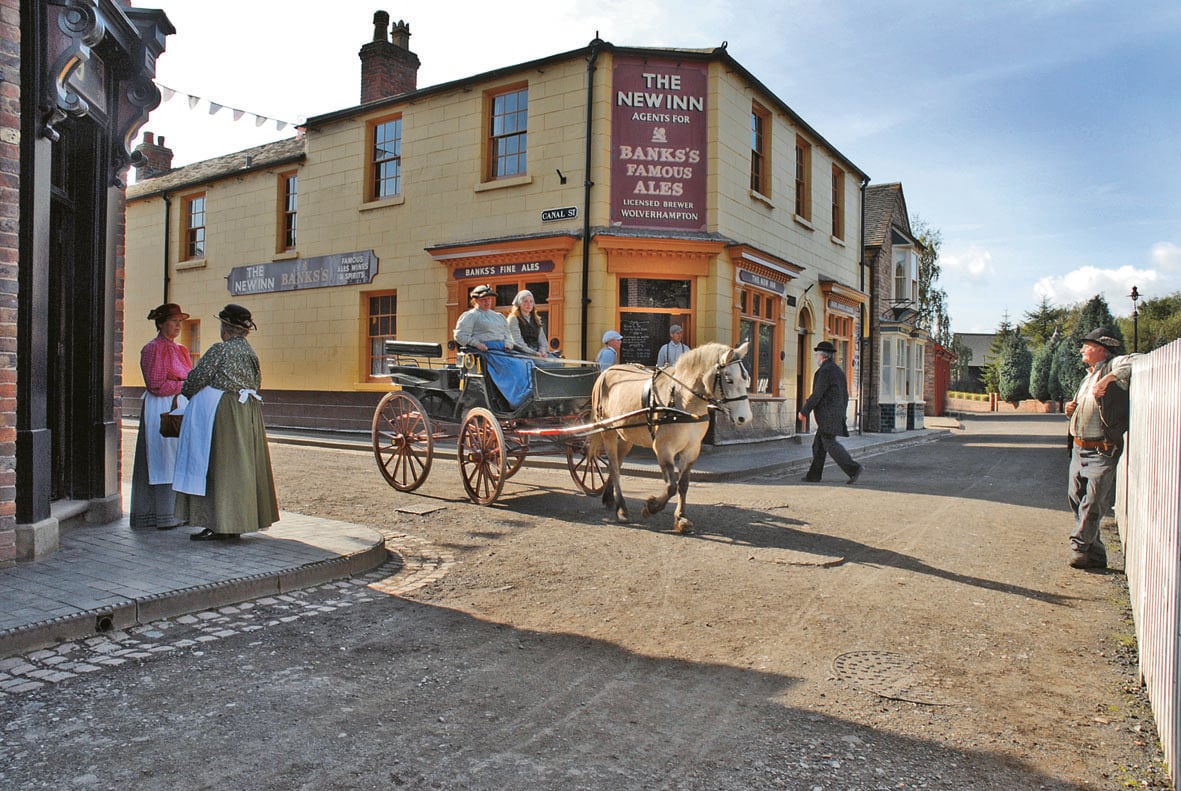
Blists Hill Victorian Town
An uptown girl
When the Ironbridge Gorge Museum Trust sought a new chief executive it chose someone with a financial background and not a museum one. Paul Gossage explains why.
The Ironbridge Gorge Museum Trust in Shropshire is well known as being entrepreneurial and a centre for academic and curatorial excellence. It cares for ten museum sites, a range of nationally designated collections, over 30 listed buildings and scheduled monuments, two Quaker burial grounds, a research library and archive, and over 100 acres of woodland. The Trust is run by a team of over 200 staff and over 500 active volunteers, and has received very little government funding over the years. Accordingly, it is essential that the museum utilises its historic assets in the most efficient and innovative way to maximise its income.
With that in mind, there can be little surprise that the new Chief Executive Officer, appointed by the board of trustees, is Anna Brennand who comes from a financial background rather than a museum one. Anna grew up in Shropshire, studied geography at the University of Liverpool and then started her accountancy career in London, initially at First Leisure, an entertainment and leisure company, and then at ICAP plc, a FTSE 100 international money and securities interdealer broker, heading up the finance function. Family circumstances brought Anna back to Shropshire in 2004, where she took on the role of Operations Director at a small not-for-profit healthcare insurance company. She restructured the business, developed a new online training package and brought new corporate clients to the company. It was from this background that she joined us in 2007 as Director of Finance and Resources and Deputy CEO. In June of this year she was promoted to become the fifth Chief Executive in our 46-year history.
Careful project management and financial control ensured that the project hit key deadlines set by funders and opened on time and on budget
Anna’s experience in the City and wider financial world has been invaluable over the years, but she has never forgotten the importance of the museum as a centre of learning, a leader in industrial archaeology and the holder of multiple designated collections. This understanding of the balance between commercial viability and curatorial excellence was one of the reasons that she secured the Chief Executive position. Her skills were put to the test in 2009 when she was the Project Manager for the development of Blists Hill Victorian Town. With a total budget of over £12 million, she oversaw the creation of a new visitor centre, the building of a ‘new’ parade of Victorian shops, an incline lift and mine railway, all while the site was open to the public. Careful project management and financial control ensured that the project hit key deadlines set by funders and opened on time and on budget.
Blists Hill serves as a microcosm of her role as Chief Executive. On the one hand, Anna is safeguarding the integrity of the museum by ensuring that all developments are historically accurate and in line with our aims. She does this with the support of a team of curators and researchers who use the extensive collections and archives as source material. However to ensure the viability of the museum, it is essential that commercial targets are achieved and costs are kept under careful control, all of which helps to maintain the interest and support of a complex list of stakeholders, including funders, local authorities, staff, volunteers, trustees and the local community.
As an Arts Council England Major Partner Museum, we enjoy strong links with museums across the country and have a close working relationship with the University of Birmingham by virtue of the Ironbridge International Institute for Cultural Heritage. Anna’s corporate background has resulted in the museum forming new partnerships with local, regional and national companies which support us in a variety of ways. Capgemini is a large employer in the local community and its staff are regularly seen volunteering in a variety of roles, from building greenhouses to helping catalogue historic costume collections. The relationship goes beyond this as the company has also sponsored the Ironbridge Gorge World Heritage Festival that we run on behalf of Telford & Wrekin Council.
Anna has also brought her commercial experience to the retail department of the museum and created two new brands: ‘Made in the Gorge’ is a range of bespoke goods designed and made by high-end craftsmen, all created within the site; and the ‘From Our Collections’ brand uses our collections and archives to inspire the creation of goods for the shops. These two ranges have been developed as visitors are becoming far more discerning in their shopping habits and prefer to purchase locally sourced goods or those with strong connections to the location.
As Anna plans the next five years, it is clear that her commercial background will contribute to the long-term success of this complex trust, but her passion for the heritage of the area and her determination not to compromise on museum standards should guarantee that the museum remains a blueprint on how to run an independent museum.
Paul Gossage is Director of Marketing & PR at the Ironbridge Gorge Museum Trust.
www.ironbridge.org.uk
Join the Discussion
You must be logged in to post a comment.